Abstract
The titres of complement fixing antibodies in the sera of rats injected with the soluble fraction of rat brain emulsified in Freunds' complete adjuvant (FCA) were usually below 10.
In contrast, injections of the nuclear, mitochondrial or microsomal fractions of rat brain in FCA were followed by the appearances of heat stable complement fixing and haemagglutinating antibodies within a few days, the highest antibody levels being attained about 6 days after the first injection of a particulate fraction. The microsomal fraction was the most efficient particulate antigen. After 2 weeks of immunization about 60 per cent of the complement fixing activity of the antisera was due to 19S antibody and the remainder to 7S antibody.
The response to injections of the nuclear and microsomal fractions of rat liver followed a similar time course but produced levels of complement fixing antibodies that were consistently lower than those engendered by the corresponding brain antigens.
Full text
PDF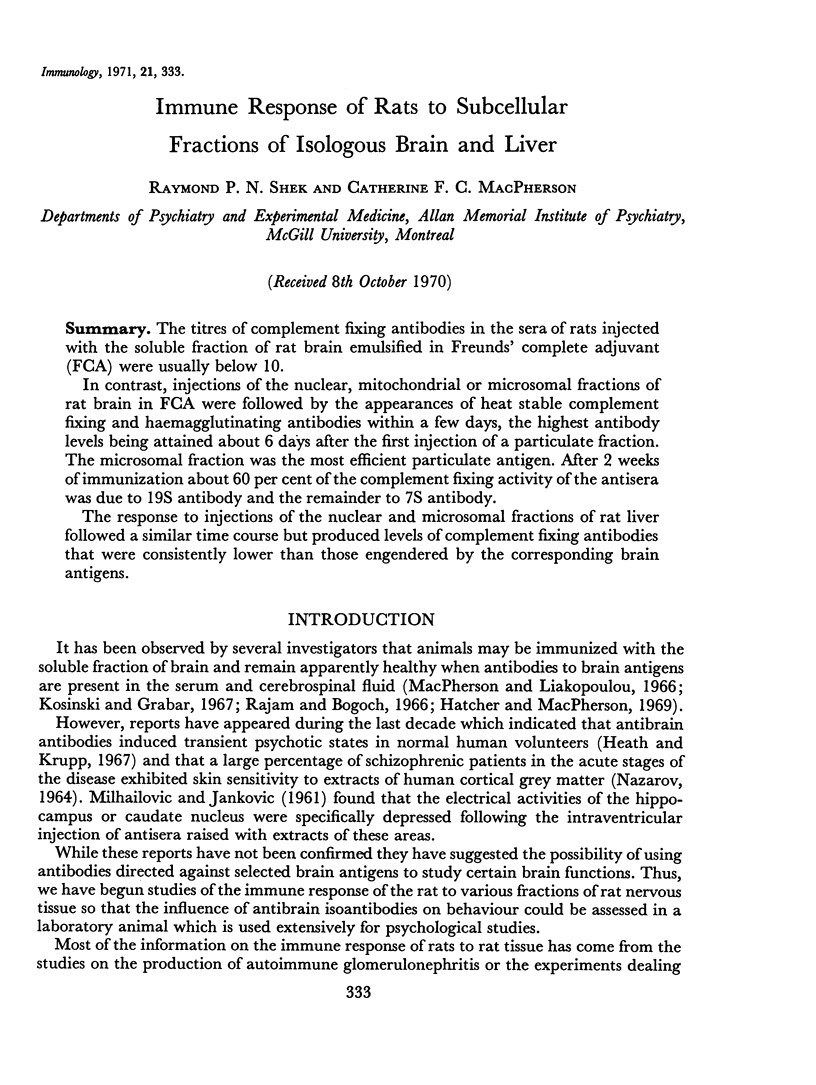
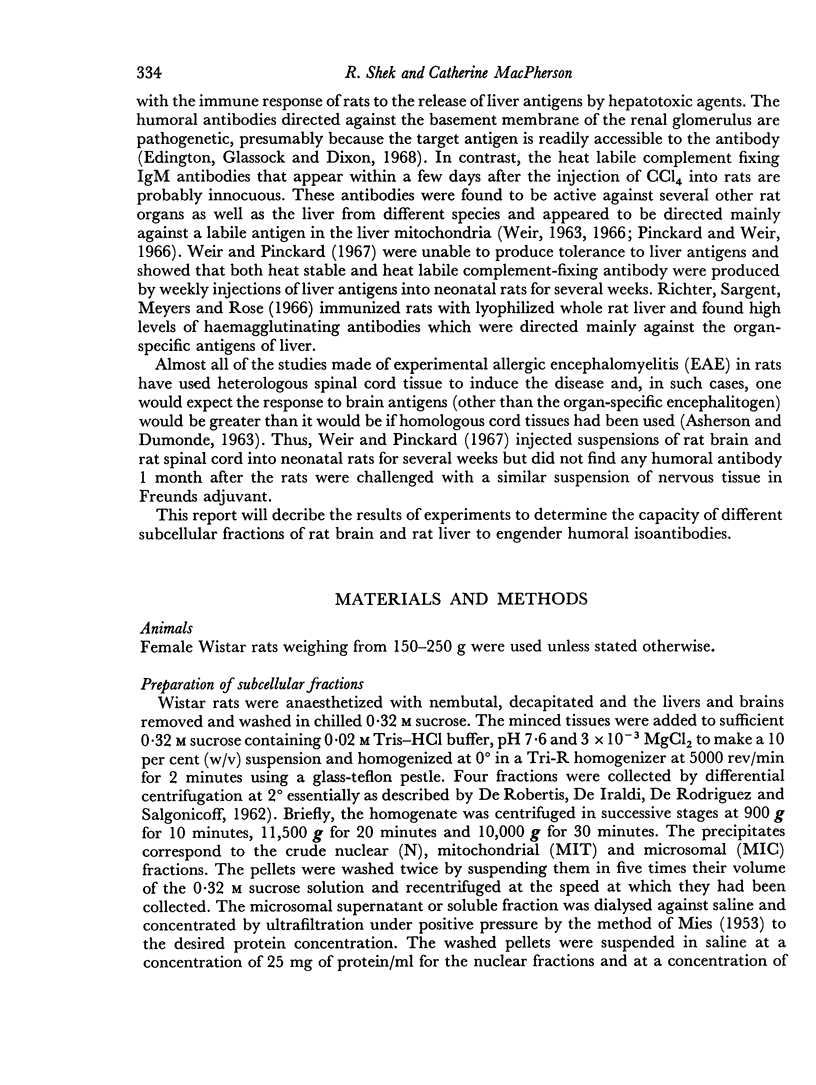
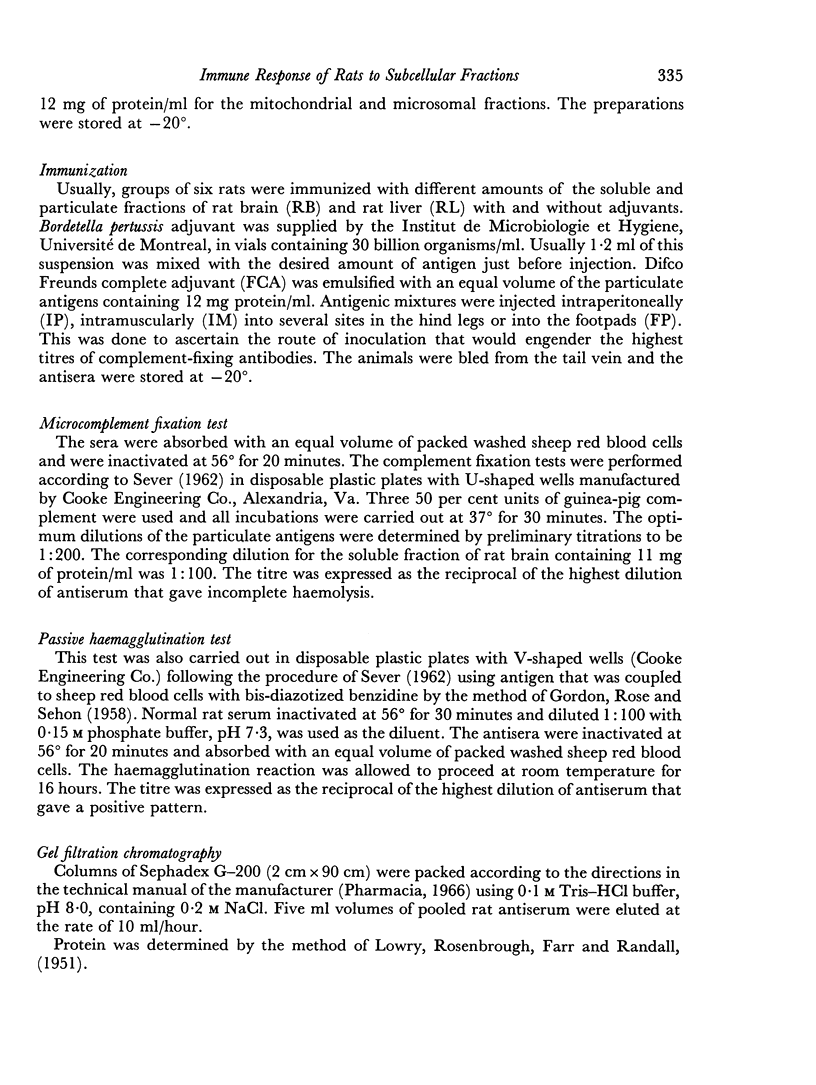
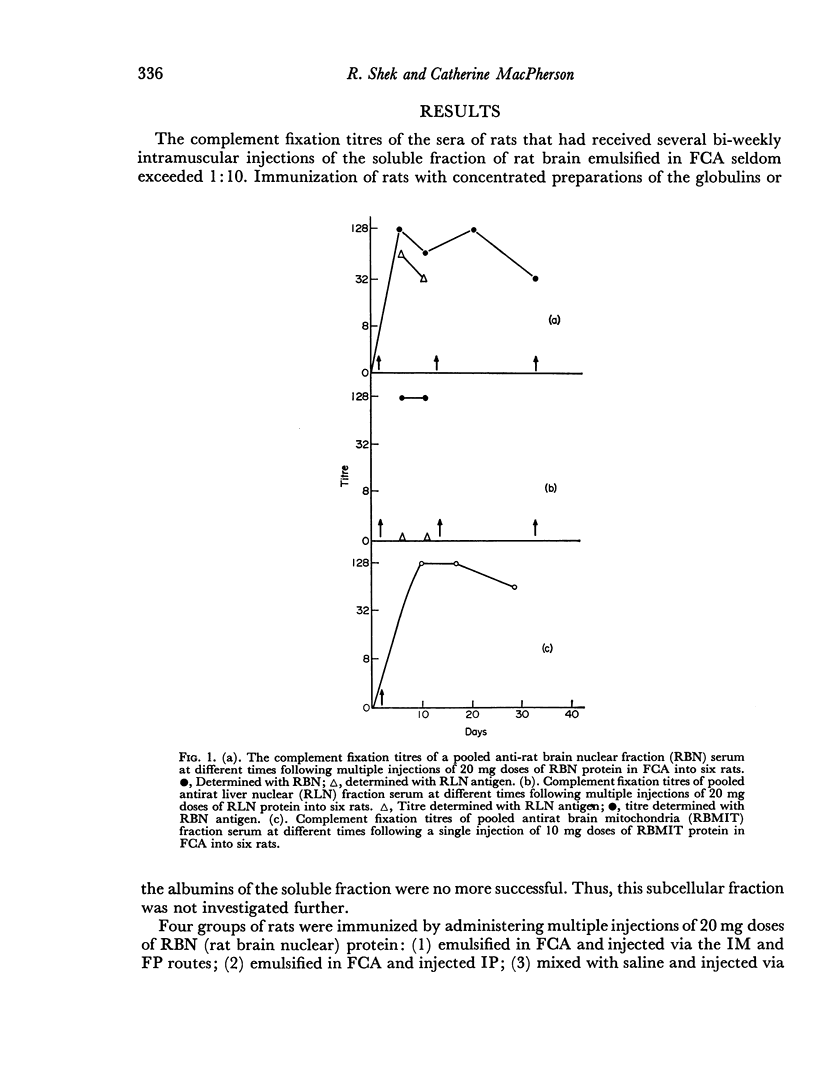
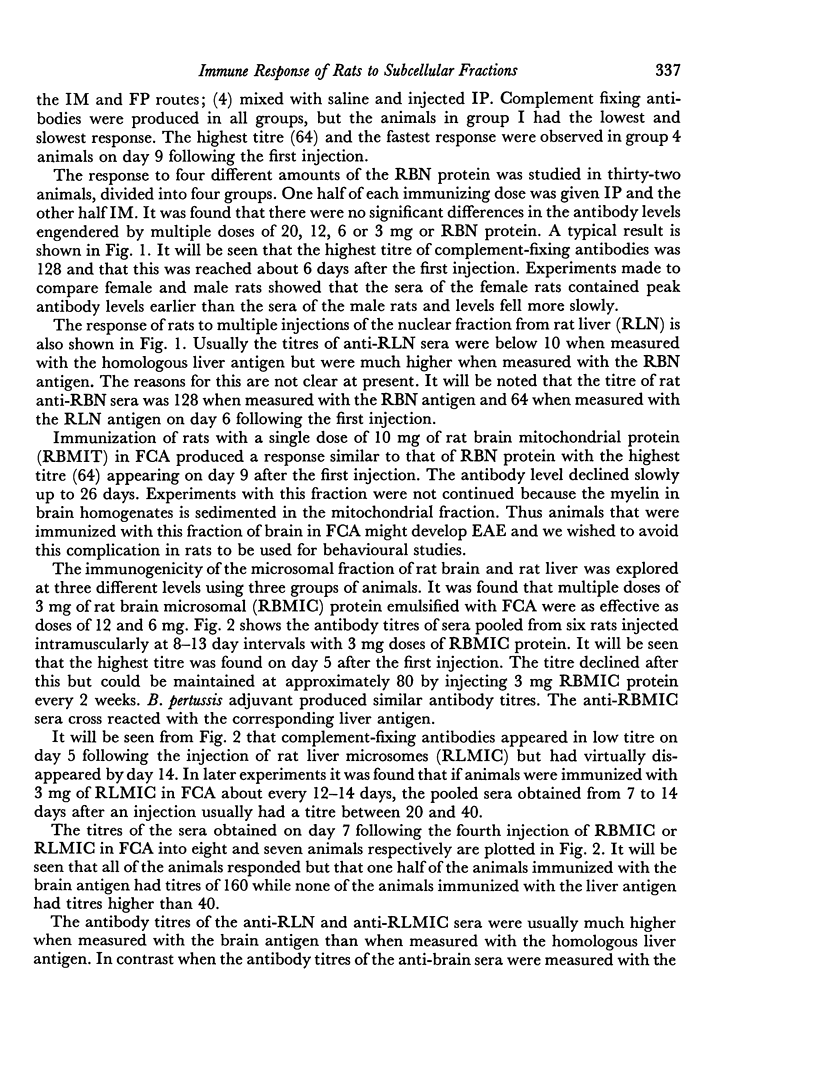
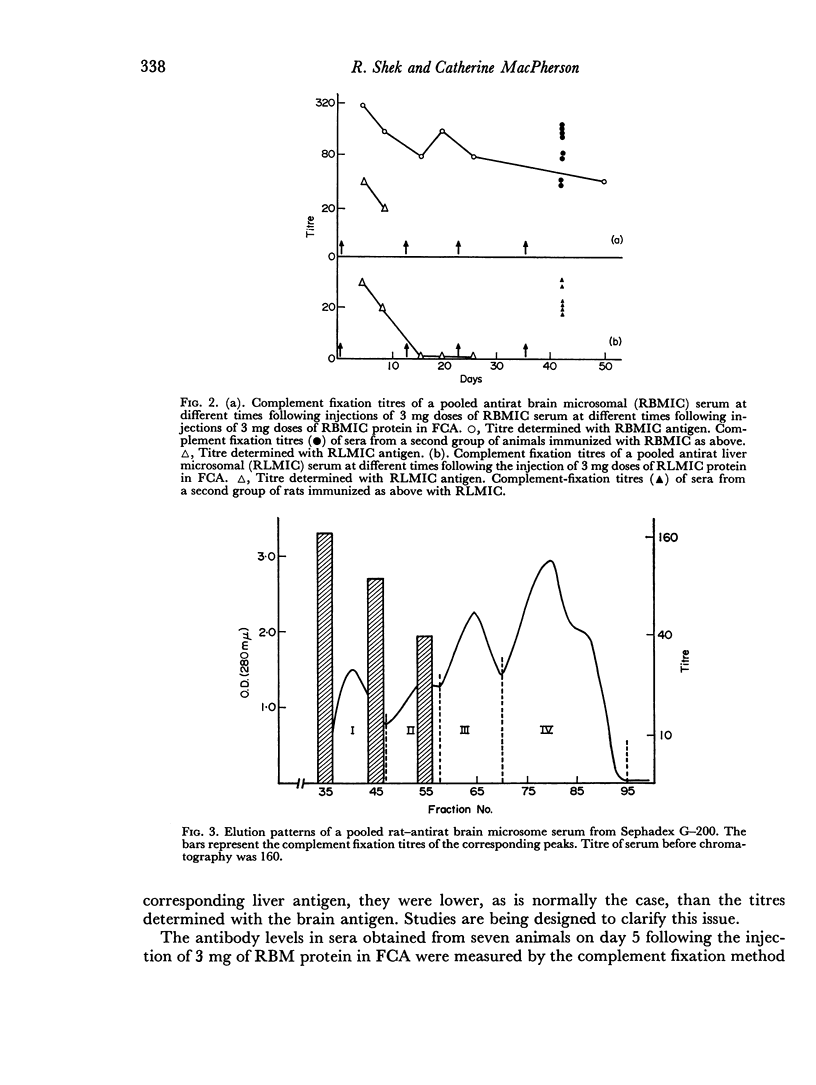
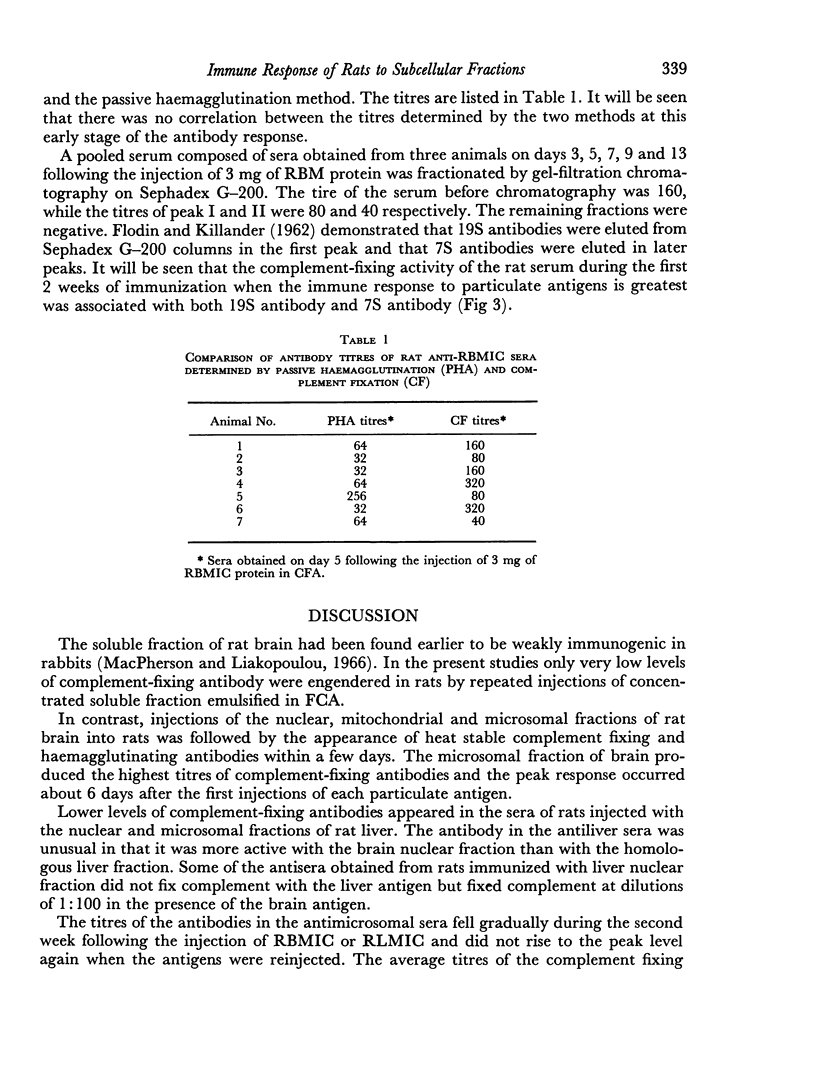
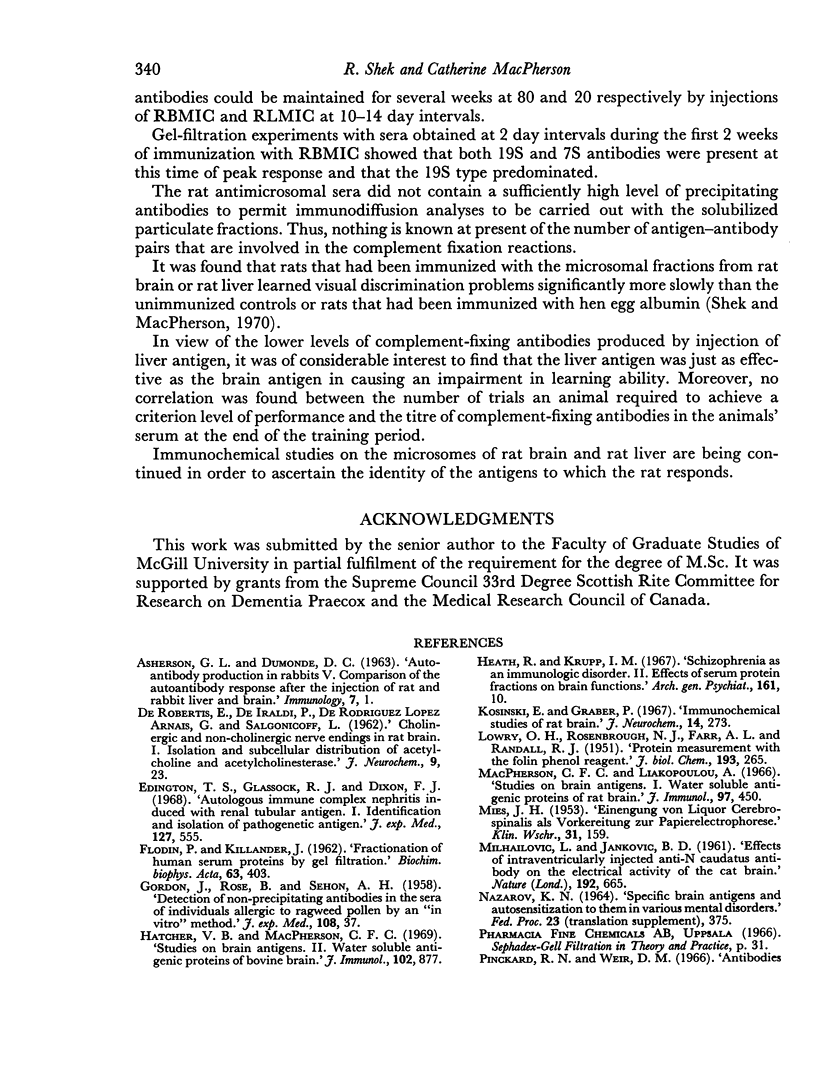
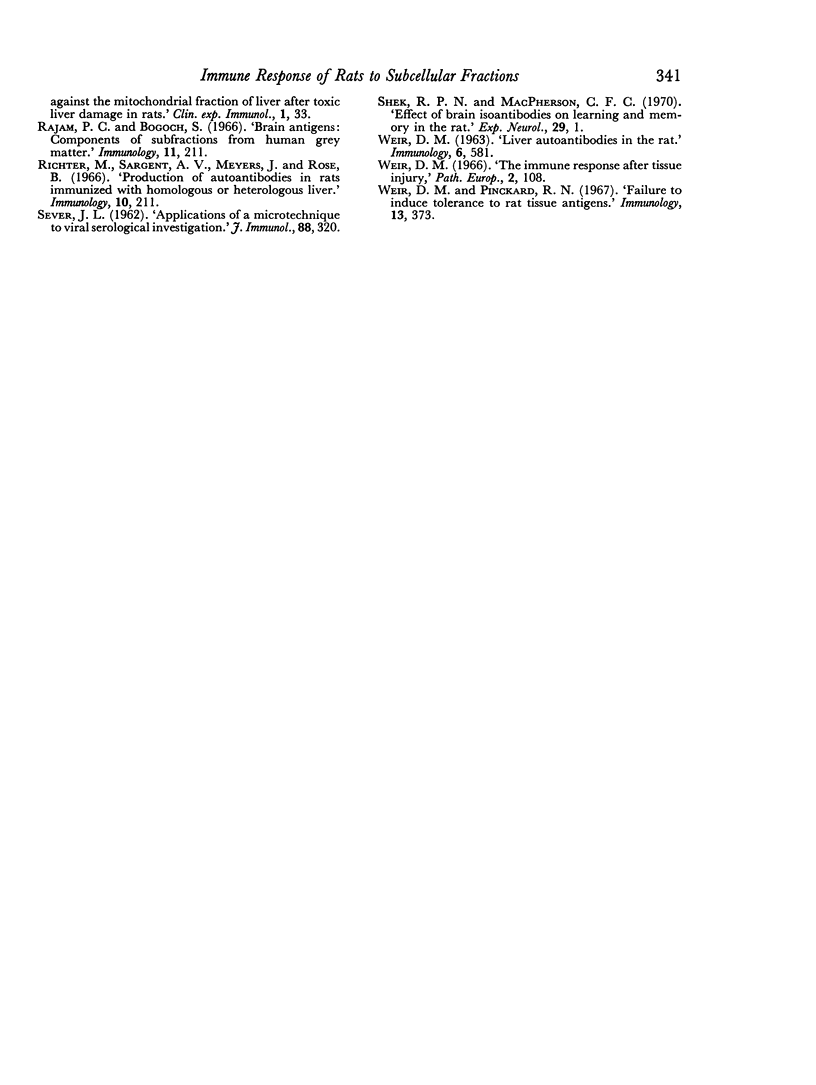
Selected References
These references are in PubMed. This may not be the complete list of references from this article.
- ASHERSON G. L., DUMONDE D. C. AUTOANTIBODY PRODUCTION IN RABBITS. V. COMPARISON OF THE AUTOANTIBODY RESPONSE AFTER THE INJECTIONS OF RAT AND RABBIT LIVER AND BRAIN. Immunology. 1964 Jan;7:1–8. [PMC free article] [PubMed] [Google Scholar]
- Edgington T. S., Glassock R. J., Dixon F. J. Autologous immune complex nephritis induced with renal tubular antigen. I. Identification and isolation of the pathogenetic antigen. J Exp Med. 1968 Mar 1;127(3):555–572. doi: 10.1084/jem.127.3.555. [DOI] [PMC free article] [PubMed] [Google Scholar]
- GORDON J., ROSE B., SEHON A. H. Detection of non-precipitating antibodies in sera of individuals allergic to ragweed pollen by an in vitro method. J Exp Med. 1958 Jul 1;108(1):37–51. doi: 10.1084/jem.108.1.37. [DOI] [PMC free article] [PubMed] [Google Scholar]
- Hatcher V. B., Macpherson C. F. Studies on brain antigens. II. Water soluble antigenic proteins of bovine brain. J Immunol. 1969 Apr;102(4):877–883. [PubMed] [Google Scholar]
- Heath R. G., Krupp I. M., Byers L. W., Liljekvist J. I. Schizophrenia as an immunologic disorder. II. Effects of serum protein fractions on brain function. Arch Gen Psychiatry. 1967 Jan;16(1):10–23. doi: 10.1001/archpsyc.1967.01730190012002. [DOI] [PubMed] [Google Scholar]
- Kosinski E., Grabar P. Immunochemical studies of rat brain. J Neurochem. 1967 Mar;14(3):273–281. doi: 10.1111/j.1471-4159.1967.tb09524.x. [DOI] [PubMed] [Google Scholar]
- LOWRY O. H., ROSEBROUGH N. J., FARR A. L., RANDALL R. J. Protein measurement with the Folin phenol reagent. J Biol Chem. 1951 Nov;193(1):265–275. [PubMed] [Google Scholar]
- MIHAILOVIC L., JANKOVIC B. D. Effects of intraventricularly injected anti-n. caudatus antibody on the electrical activity of the cat brain. Nature. 1961 Nov 18;192:665–666. doi: 10.1038/192665a0. [DOI] [PubMed] [Google Scholar]
- MacPherson C. F., Liakopoulou A. Studies on brain antigens. I. Water soluble antigenic proteins of rat brain. J Immunol. 1966 Oct;97(4):450–457. [PubMed] [Google Scholar]
- NAZAROV K. N. SPECIFIC BRAIN ANTIGENS AND AUTOSENSITIZATION TO THEM IN VARIOUS MENTAL DISORDERS. Fed Proc Transl Suppl. 1964 Mar-Apr;23:375–378. [PubMed] [Google Scholar]
- Pinckard R. N., Weir D. M. Antibodies against the mitochondrial fraction of liver after toxic liver damage in rats. Clin Exp Immunol. 1966 Jan;1(1):33–43. [PMC free article] [PubMed] [Google Scholar]
- SEVER J. L. Application of a microtechnique to viral serological investigations. J Immunol. 1962 Mar;88:320–329. [PubMed] [Google Scholar]
- WEIR D. M. LIVER AUTOANTIBODIES IN THE RAT. Immunology. 1963 Nov;6:581–591. [PMC free article] [PubMed] [Google Scholar]
- Weir D. M., Pinckard R. N. Failure to induce tolerance to rat tissue antigens. Immunology. 1967 Oct;13(4):373–380. [PMC free article] [PubMed] [Google Scholar]


